Copyright © XIAMEN AZ HEARING TECHNOLOGY CO., LTD 2021. All Right Reserved
Hearing Aids: The Definitive Guide
This is the most comprehensive guide to hearing aids in 2020.
In this guide, you’ll learn everything you need to know about hearing aids, including
- Types of hearing aids
- Hearing aid features
- Hearing aid brands
- How to choose the hearing aid
- Lots more
Let’s get started.
Contents
CHAPTER 1
What Are Hearing Aids
Before we get into deeper details about hearing aids, let’s start with a quick review of the basics.
Specifically, you will learn what are hearing aids, their basic function in this chapter.
Let’s drive in.
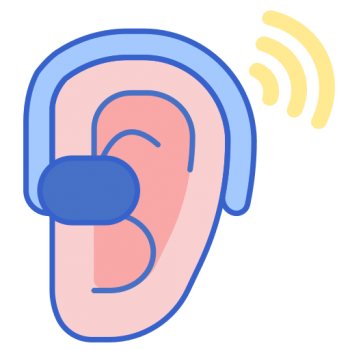
What Are Hearing Aids?
If your parents or grandparents are elderly, or you have some elder friends, you may notice their hearing loss problem. In that occasion, people naturally turn to hearing aids for help.
Hearing aids are amplifying devices that compensate people’s hearing loss, which help people to listen, communicate during our daily life. It’s a great hearing assist device.
In fact, modern hearing aids don’t just amplify sound, they also reduce noise and suppress feedback and can even be integrated with AI machine learning and human health.
Well, we now know that the basic purpose of hearing aids is hearing compensation, and that hearing aids may have fancy functions.
If you don’t know much about hearing aids before. Don’t worry. This is your first step to understand everything about hearing aids.
Keep reading…
CHAPTER 2
How Do Hearing Aids Work
Now let’s get to the nitty-gritty of how hearing aids operate.
We’ll show you the main components of hearing aids.
And then, we’ll separately look at how the analog and digital devices work.
That’s because understanding the difference between them will help you make your choice.
So, let’s drive right in.
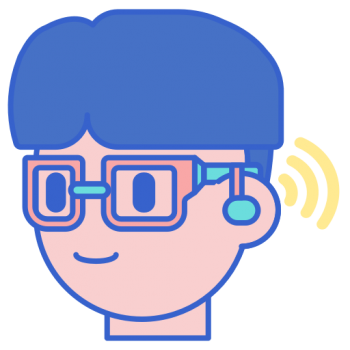
Basic Function of Hearing Aids
If you have trouble listening to what people are saying in noisy environments like restaurants, then you need a hearing aid.
With a functional hearing aid, you won’t have to struggle reading lips anymore.
But one thing might be troubling you: How the hearing aid functions.
It is obvious that it needs an amplifier that can amplify sound, otherwise it won’t work to compensate for hearing loss, right?
The other core components are the microphone, the receiver, and the battery. Microphone collects sound, Receiver/speaker outputs the sound, and battery powers the device.
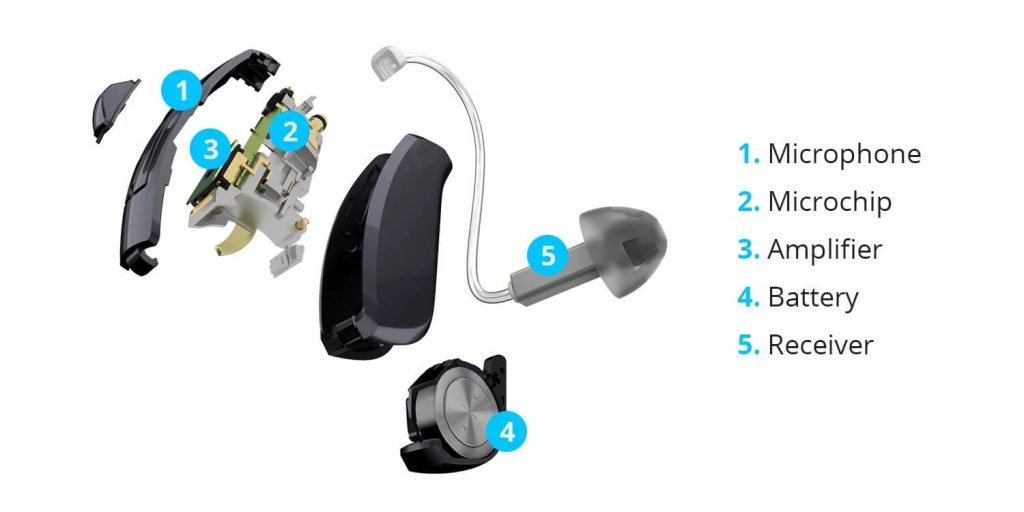
These are the key components required for a hearing aid. Hearing aids can have extra parts such as manual controls, wireless radios, and telecoils.
Below we will explain exactly how analog and digital hearing aids work.
How Do Analog Hearing Aids Work
You can think of analog hearing devices as a microphone connected to a speaker. Its operation is simple.
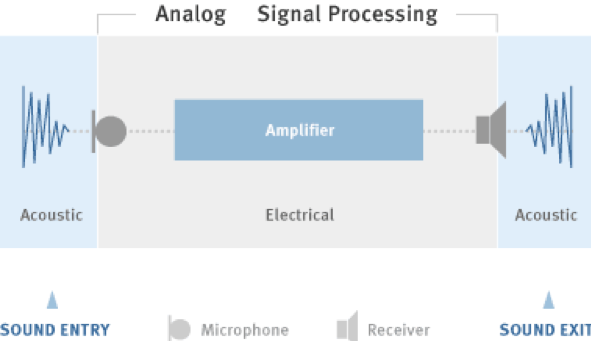
It picks sound via the microphone, makes it louder with the amplifier, and delivers sound to your ear.
That means all collected sounds including noise are amplified and delivered equally to your ears.
This is different from digital devices that filter sound.
How Do Digital Hearing Aids Work
Like analog devices, digital hearing aids amplify sound. The difference is that they have advanced processors, the Digital Signal Processor (DSP).
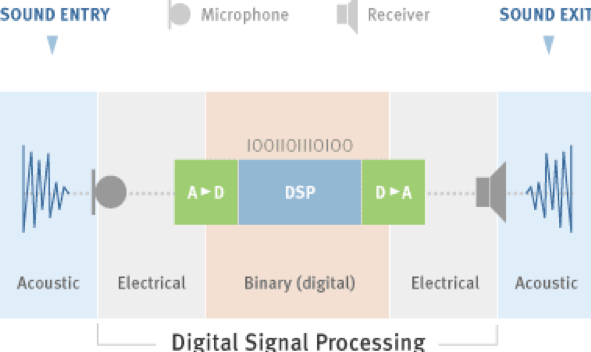
The work of DSP is to change sound waves to digital codes for processing. This allows the processor to separate noise from the useful sound.
DSP also allows digital devices to match output sounds with your level of hearing loss. It has channels 2 to 16 channels or even more to process sound simultaneously.
Digital hearing aids work like this:
- The microphone collects sound and coverts sound signal to electric signal to the processor.
- The processor analyses it, and amplifies it based on algorithm.
- The receiver converts the digital codes into sound waves and delivers to your ears.
Digital hearing aids are more popular in the market. They are superior to help you conquer with your hearing loss.
CHAPTER 3
Types of Hearing Aid
There are various types of hearing aids in the market.
You might be wondering which type you should choose.
Now let’s briefly explain the different types of hearing aids and their pros and cons.

Hearing Aid Types Based on Wear Style
For starters, hearing aids can be divided into different groups according to wear style.
Generally speaking, it can either be BTE (behind-the-ear) or ITE(in-the-ear).
Classical Behind-the-ear (BTE)
BTE owns a larger market share comparing with other types.
Just like the name suggests, you wear this hearing aid behind your ear.
The device sends sound from the Receiver to your ear canal through a hollow tube.
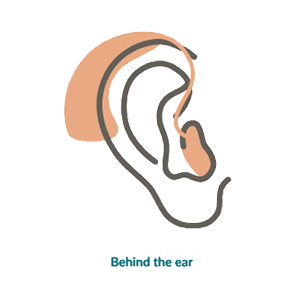
For mild hearing loss, standard canal dome and a thin tubing make your ear canal more open and allow better air flow.
For severe hearing loss, a custom earmold is used to seal your ear canal. This also means louder sounds and less feedback but less comfort.
Pros
- Could fit mild-to-profound hearing losses
- Compatible with standard domes or custom earmolds
- Larger size allows larger batteries with bigger capacity, meaning more powerful or longer working time
Cons
- Bigger size and heavier weight may be a burden to the ear
- Plugged-up effect or occlusion effect could be occurred
- Could be hard to wear for people wear eyeglasses
Open-fit Hearing Aid
Open fit hearing aid is just a category of BTE.
The aid fits well behind your ear with a tiny tube that goes into your ear canal.
Because of the tube’s tiny size, the ear canal remains open. As a result, low frequency sounds naturally enter your ear for amplification.
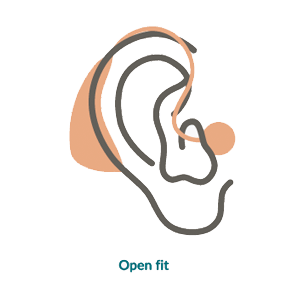
If you have mild to moderate hearing loss, you might like open fit design.
Pros
- Smaller size means less visible
- Allow ventilation in the ear, more natural and comfortable experience
- Allows low-frequency sounds into the ear with reduced feedback
Cons
- The tube needs to be cleaned and replaced when needed.
- It may cause feedback for high sound output.
- Couldn’t fit for severe hearing loss people as good as traditional BTE does.
Receiver in the canal (RIC) Hearing Aid
Also called receiver-in-the-ear (RITE) or canal receiver technology (CRT).
Just like BTE models, you wear them comfortably behind your ears. But RIC’s receiver is located at the end of the thin wire and put in the ear canal rather than inside of BTE hearing aids.
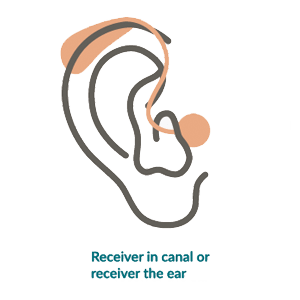
It’s more likely that you get improved listening experienced with RIC. Because the microphone is separated from the receiver, you could experience less feedback.
If you are dealing with mild to moderate hearing loss, and can handle small devices, then a RIC hearing aid is an option worth considering
Pros
- Less feedback and occlusion effect than other traditional BTE hearing aids.
- More natural sound because the ear canal remains open.
- Great amplification of high-pitched sound, perfect for mild to moderate hearing loss.
Pros
- Receiver is in the ear canal and is more vulnerable to moisture and damage.
- The Receiver’s malfunction could cause extra repair or maintenance cost.
- It can be costly to some users.
In the Ear (ITE) Hearing Aid
Like the name implies you wear this hearing device in your ear. And to make wearing it more comfortable, it can be customized to fit your ear.
The housing carries all the electronic components of this hearing aid, and it has enough room for extra features like wireless streaming, directional microphone and telecoil.
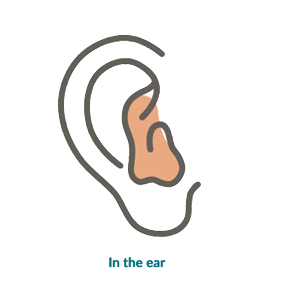
Pros
- Can include extra features like volume control
- More comfortable and stable to wear during sports & activities
- Longer battery working time due to its larger capacity
- Could be customized based on an individual’s ear
Cons
- Moisture and earwax can cause clogging
- Bigger size among in the ear types
- ITE hearing aids may not compensate enough for people with more severe hearing loss.
In the Canal (ITC) Hearing Aid
An in-the-canal (ITC) hearing aid fits partly in the ear canal.
ITC hearing aids are a little smaller than ITE devices and bigger than CIC devices. It has housing for all the components while maintains a lightweight.
The hearing devices can be customized to suit your ear anatomy and hear loss as well.
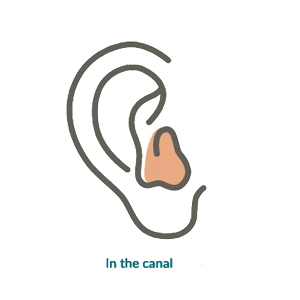
Pros
- Not easily noticeable in your ear
- Can include a directional microphone and volume control
- Customizable to fit perfectly in your ear canal.
Cons
- Susceptible to clogging by ear wax
- Can be hard to adjust and handle, because the size is smaller than ITE
Completely in the Canal (CIC) Hearing Aid
Completely-in-the-canal hearing devices are designed to fit into your ears.
Since they perfectly fit into your ear canal, they are more discreet and barely noticeable.
And because it sits in the canal that doesn’t mean it is hard to remove. You can do that using a removal string.
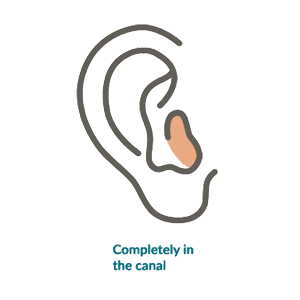
They are good options for mild to moderate hearing challenges.
Pros
- Very discrete since they fit completely in your ear canal
- Easily removable, usually come with string antenna on the faceplate
- Operation is quite simple for elder users
Cons
- Its small size makes handling or adjusting it a little hard
- The small size means features could be limited. Eg, directional microphones may not fit in CIC
- The earwax could build up and then affect sound quality.
- Need more regular cleaning
Based on Circuit
You’ve probably heard that hearing aids can either be analog or digital.
Yes, these are two types of hearing aids according to circuit technology .
Analog hearing aids amplify all sounds at same level owing to the amplifier; digital hearing aids could filter out noise and only amplify sounds we want to hear owing to the advanced processor.
Since we have covered the how digital & analog hearing aids work on Chapter 2, let’s stop rambling and move on to the next chapter.
CHAPTER 4
Hearing Aids Brands & Manufacturers
You might be lost in various hearing aid brands and manufacturers and wondering which one is the best.
Well, that’s what you’re about to find out in this chapter.
We will cover the “Big Five” top hearing aid manufacturers with a proven track record.
Let’s started.

Widex Hearing Aids

Widex is a world-renowned hearing aid manufacturer. It stands out due to its innovation and advanced technology in bringing natural music reproduction and best sound in real life.
The company has been in the market for over 60 years. Back in 2019, Widex merged with another hearing aid manufacturer-Sivantos to WS Audiology. WS Audiology is now the top 3 hearing aid company in the world.
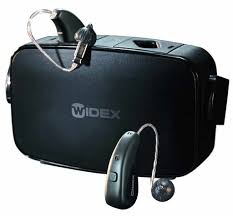
Their most popular product is MOMENT, a rechargeable RIC with built-in lithium battery with very small size.
MOMENT App allows uses to make A/B comparison to help with machine learning. Moment could be compatible with iPhone directly.
Signia Hearing Aids

Signia is among the big hearing aid brands globally. Its hearing devices are produced by WS Audiology, which is the same producer of Widex hearing aids.
Before being acquired by Sivatos in 2015, Signia products were made under the Siemens brand. In 2019, they merged into WS Audiology.
Signia’s two popular models are the Pure Charge&Go Nx and Styletto Connect. The Pure Charge&Go Nx is all about convenience. It gestures Own Voice Processing (OVP) and wireless connectivity.
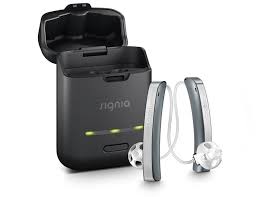
The Styletto boasts of premium features like remote control, compatibility with myHearing App, a portable charger, and Bluetooth connectivity.
Styletto won Red Dot Design Award on 2019. What contributes to the slim-line design is the innovative pin-shaped rechargeable battery.
Oticon Hearing Aids
You may have heard of Oticon hearing aids, in fact Demant A/S, the owner of this brand, is the 2nd largest hearing aid manufacturer.
Oticon has put a lot of effort into studying how the brain processes sound. Oticon believes that in addition to improving listening effects, it is also important to help our brain to understand the sound received.
![]()
In 2016, Oticon launched the hot hearing instrument- Opn, “BrainHearing” technology allows binaural processing twice as fast as before, bringing a better listening experience.
Oticon is the go-to manufacturer for any type of hearing aid whether it’s for children or adults. They have modern accessories that allow you to maximize benefits from your hearing aid.
Phonak Hearing Aids

Phonak is a Sonova Group brand. Combined brands under Sonova contribute about 24% of hearing aid sales worldwide.
In fact, Phonak is a leader in several technologies and products.
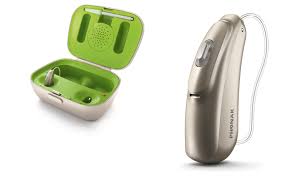
In 2017, Phonak released a revolutionary rechargeable hearing aid-AudéoBR.
For the first time, hearing aids used lithium batteries and greatly improved working time and reduced charging time, while other manufacturers were still using silver-zinc or nickel-metal hydride (NiMH) batteries.
In 2018, when most manufacturers can only offer Bluetooth hearing aids that pair only with iPhones, the AudéoMarvel was launched. The product is based on the new SWORD (Sonova Wireless One Radio Digital) chip, making audio streaming and totally hands-free calling possible.
Starkey Hearing Aids

Most of the top hearing aid manufacturers are from Europe, while Starkey is the only U.S. company among “big 5 ” manufacturers.
As we mentioned earlier, Phonak was one of the first to offer Bluetooth hearing aids compatible with the iPhone and Andriod, while Starkey was the leading developer of Made-for-iPhone hearing aids.
What’s striking is the application of artificial intelligence and human health of Starkey hearing aids. For example, hearing aids have built-in sensors that can detect if the wearer has fallen and alert health care professionals. This is clearly a direction for the future of hearing aids, Starkey, well done!
Resound Hearing Aids

One that has to be introduced is the ReSound hearing aids from GN Hearing. As the world’s fourth largest manufacturer of premium hearing aids, ReSound products are sold around the world.
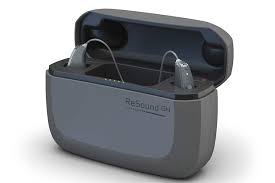
ReSound is a step ahead of Starkey providing hearing aids specially for the iPhone, introducing LiNQ Quattro hearing aids in 2018.
Resound is also a pioneer in wireless streaming solutions. Modern accessories from Resound allow sounds from your phone, MP3 player and other devices could be transmitted to hearing aids, and maximize benefits from your hearing aid.
CHAPTER 5
Hearing Aid Features
By now you’re fully familiar with the different hearing aids brands.
But that alone isn’t enough.
Hearing device could have all kinds of features which might sound confusing to you.
What kind of features might you need more?
That’s what we are going to cover in this chapter.
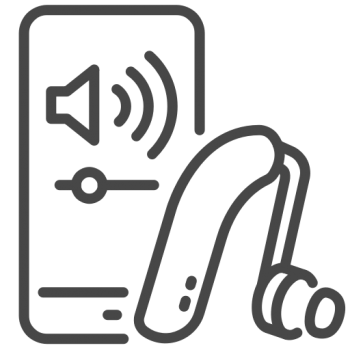
Programs/Mode
Most hearing devices are preinstalled with a few programs for use in different environments.
That means you can use the noise cancellation mode in restaurants, and switch to the T-coil mode when you are having a phone call or in church where has the T-coil sound system. Other common programs including TV mode, music mode and outdoor mode.
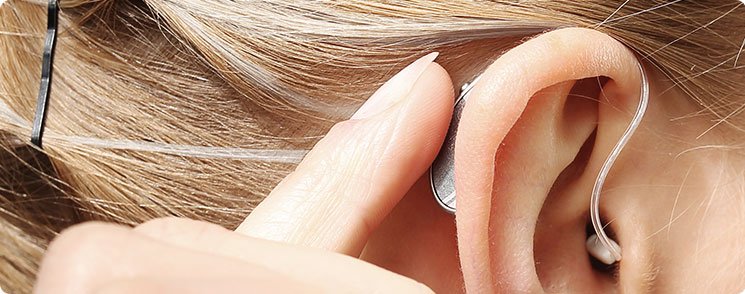
Digital Noise Reduction (DNR)
Most hearing aids have a noise reduction feature.
Digital noise reduction or DNR can detect and determine if signals are noise-like or speech-like.
When you’re in a noisy environment, the aid will automatically reduce the volume of intense and loud noise to improve sound clarity.
AFC (Adaptive Feedback Cancellation) technology
If you’ve used hearing aids before, then you know feedback is annoying.
Acoustic feedback is high pitched whistling sound results from the irritating coupling between the microphone and the speaker.
The good news is that most digital hearing aids have AFC technology to reduce this feedback and make the sound quality better.
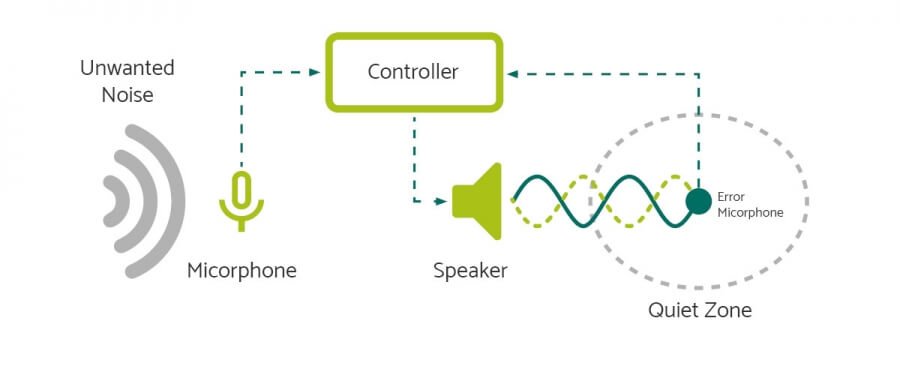
Adaptive Directional Microphones
We know that sound travels in different directions. But which direction should the microphone pick up sound from?
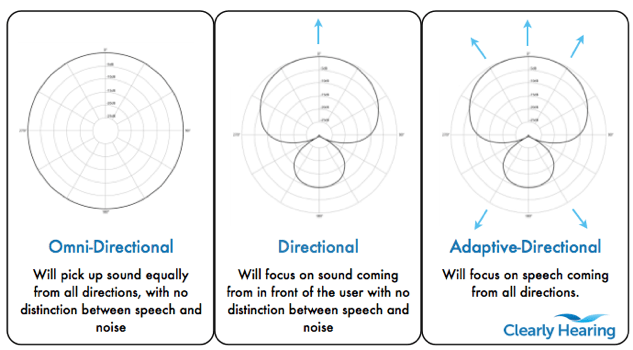
Adaptive directional microphones are a giant leap forward in hearing aid microphones. The hearing aid microphone automatically and dynamically focuses on speech, no matter which direction it comes from.
You may see hearing aid vendors advertise dual microphones. The reason is same. Dual Mic allows users change programs and determines whether the omnidirectional or directional microphones are working based on program setting.
Hearing aids that have both omnidirectional and directional or adaptive directional microphones provide the greatest benefit to you. You should check this feature before purchasing your hearing aids.
Programmability & Hearing Aid Fitting
Digital hearing aids could be programmable to suit your specific hearing problem.
Once you’ve chosen the model you prefer, your audiologist can customize your hearing aids to your level of hearing loss. That is, the process of fitting. An audiologist can program your hearing aids to deliver the best hearing experience possible.

How do audiologists make sure your hearing aids are amplified to the best degree? That brings us to “real ear measurement”. Your audiologist will know exactly how much sound amplification is entering your ear canal by taking real-ear measurements.
Using this technique is considered a “best practice” in audiology. Don’t worry too much about the technology, you’ll learn about it when the audiologist guides you through fitting.
Channel
A channel is what helps in covering a certain range of frequencies. The hearing aid treats those frequencies the same way.
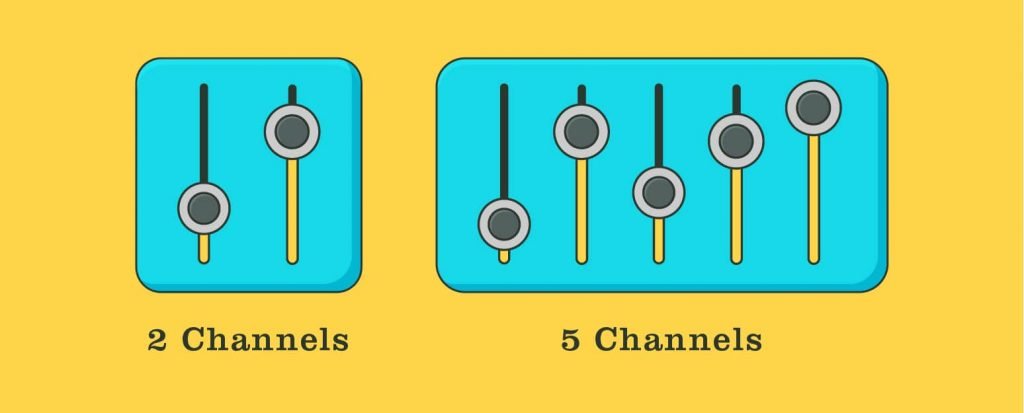
The hearing aid will pick the average level of sound in each frequency range for analyzing. A different gain is then assigned to the sound as per your hearing loss in each frequency range. The final sound is the sum of outputs from different channels.
So. the more the channels or bands in your hearing aid, the better control. It allows you to better tune volume in one area without affecting other areas.
Big brands use chips having higher channels. But because of the improved capabilities, higher channels means higher cost for chips.
T-coil
T-coil is short for telecoil. A telecoil is a small copper wire coil that can be installed in some hearing aids and cochlear implants.
It can act as a receiver, picking up the magnetic signal from the loop system and converting it into an acoustic signal. In this way it blocks out ambient noise and improves the signal-to-noise ratio.
You may ask, in what occasion could I use T-coil? In fact, T-coils work with induction loop systems, FM systems and telephones. Loop systems are found in many auditoriums, public transportation venues such as airports and bus stations, theaters, places of worship and even grocery stores.
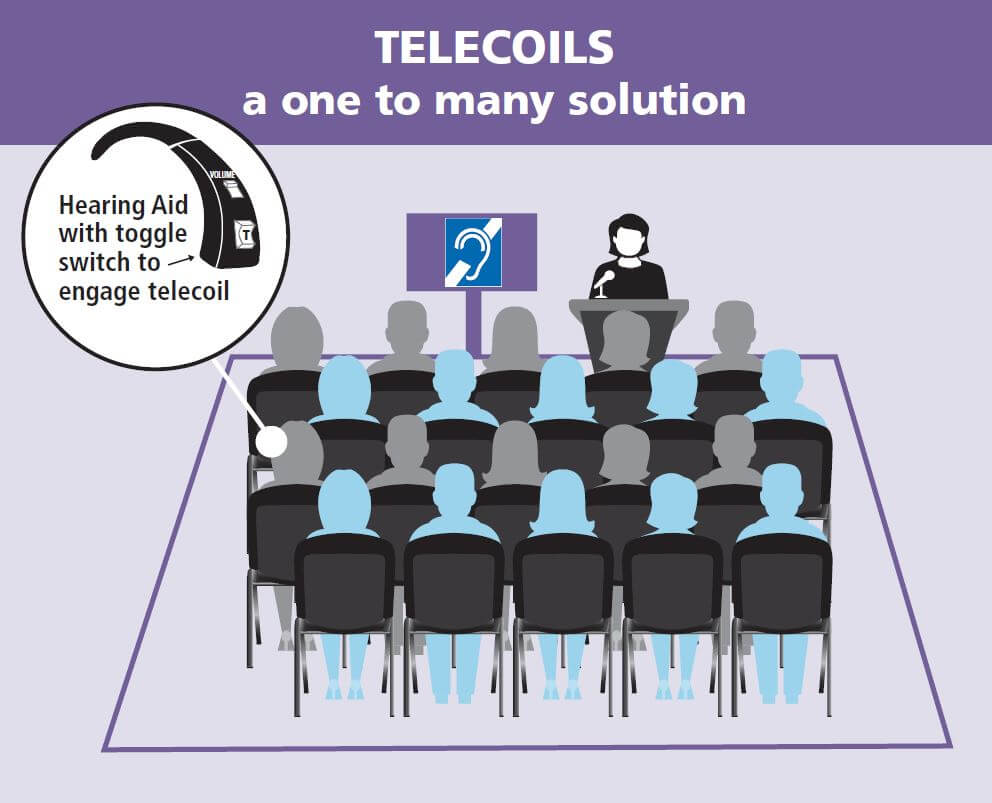
With telephones being so prevalent today, it is essential that you choose a hearing aid with T-coil built in, as this will greatly improve the quality of your calls.
Low Battery Warning
Batteries power the hearing aid.
When you hear distorted sound or you might have to increase volume to listen better, you might need to change a new battery.
Standard batteries for hearing devices can last up to 21 days depending on your hearing aid, its battery capacity and how often you use it.
But how do you know it’s the right time to change it?
That’s where low battery warning comes in. Modern hearing aids indicate battery level through a voice or a beep sound.
It’s a great feature because it keeps you alerted so that you are not surprised with a flat battery in the middle of an important event.
Hearing Aids Additional Features
Tinnitus treatment
Tinnitus is a disturbing condition where the patient constantly hears buzzing or ringing sounds in the ears.
Most people with this condition also have hearing problems. Since there is no cure, hearing aids are an effective way for managing tinnitus.
Some hearing aids with tinnitus treatment are cleverly designed to amplify background noise and divert your attention from the tinnitus. That way, your brain won’t just focus on the tinnitus, but on the sounds you really want to hear.
Data Logging
Data logging is a feature that allows hearing devices to collect data. And hearing aids could then be customized as per your habits and listening environments, as the data tells.
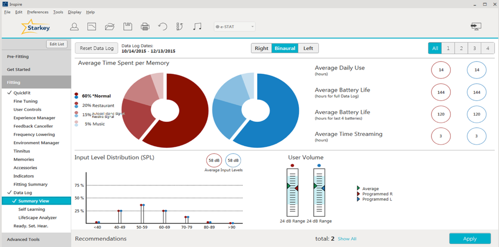
It’s a great tool that can be used to personalize your hearing aid and then improve your hearing experience.
Waterproof
The waterproof feature protects the hearing aid from damage by water. That means it can remain functional after being submerged in water.
Of course, this doesn’t mean you intentionally immerse it in water to test its capabilities. This feature is helpful in protecting your device when accidents occur.
Rechargeable
We’ve talked about batteries and why low battery warning features are important.
Modern hearing devices come with rechargeable batteries. They can also offer extra convenience and the comfort of knowing that you’re using environmentally friendly technology.
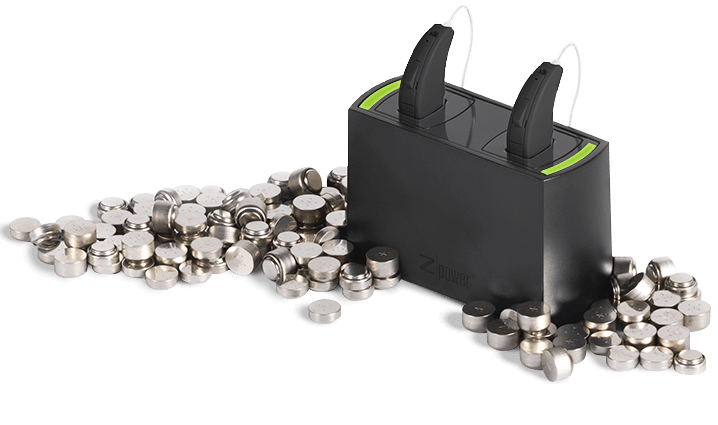
You don’t have to buy a bunch of zinc-air batteries, you don’t have to remove dead battery and change new battery every time you hear low battery signal. With rechargeable hearing aids, you only need to plug the device into a power source which makes using them easier.
If you hate to change battery all the time or you prefer to use environmental-friendly products, you could consider rechargeable hearing aids
Bluetooth & Audio Streaming
Bluetooth is a technology that allows you to share signals between electronic devices without using cables.
It enables your hearing aids to connect with your Android or iOS phone, tablets, TV or any other audio device.
Some of the hearing aids come with more features that allow you to control the connected devices. The features may include media streaming, remote control.
In the near future, you could think of your hearing aids as hi-fi earbuds or headphones more than help with your hearing loss.
CHAPTER 6
Hearing Aids Cost
You may have noticed a lot of hearing aids on the market.
However, most hearing loss people are still hesitated to buy them. Why?
The reason is quite simple. Hearing aids are so expensive that the average cost of a hearing aid is $500 to $4,000, and that is just for one ear!
And, that’s what we’re looking at in this chapter.

Things You Pay for When You Buy Hearing Aids
6.1 Advanced Features & Functions
Of course, the level of technology influences the price of a hearing aid a lot. More features and capabilities bring higher prices. The features may include:
- Directional microphones
- Rechargeability
- Bluetooth connection with your phone
- Direct streaming,
- Tinnitus management
- Fancy Accessories (include one-year supply of batteries)
- Hearing apps (may have basic listening test or even remote fitting)
However, the high price is well compensated. These hearing aids do more than just helping you to hear better. They allow you to interact better with your family, friends, and compatible electronic devices. They can also be customized to suit your lifestyle and hearing needs.
As the old saying goes, you get what you pay for. Products from renowned brands are better in terms of quality and features.
6.2 Audiologist’s Service
It is well known that when you buy a hearing aid from an audiologist, the final price you pay for actually include audiologist’s service cost, services including:
- hearing test (includes ear inspection)
- hearing aid fitting and programming
- hearing aid thorough cleaning
- adjustments and enhancements
- 1 or 2 subsequent consultations

You might complain the bundling sales of hearing aids by the audiologist. However, the work of audiologists can’t be more important. For the same hearing aid, the experience brought to you by an expert with proper fitting is definitely different.
To be fair, a professional audiologist with good service deserves higher prices.
6.3 Research and Development (R&D) Cost
Just like other technological development of electronics, innovative hearing aid manufacturers need to invest heavily in research and development.
Basically, the money that goes into making a device can be much higher than the cost of the material itself.
The high cost is converted into the final cost of the product.
Competition among hearing aid manufacturers had been intensified, and whoever can lead new innovations in product development may be more successful than others.
6.4 Warranty & After-Sales
All hearing aids manufacturers offer a at least a 1-year warranties. It could cover damage, loss, and repair. As a result, many manufacturers include them in the price.
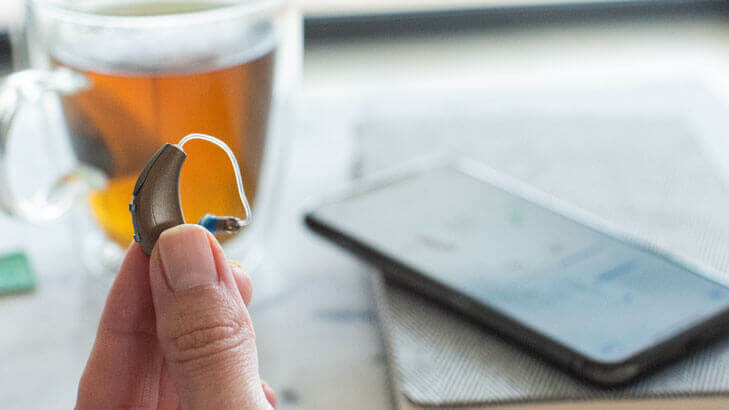
Well, this is somewhat justifiable. Think about how many times our mobile phone was accidentally dropped by us. Hearing aids could have these accidents too.
If these failures occur during the warranty period, most manufacturers will propose solutions responsibly.
So now we know that there are many factors causing high cost of hearing aids. It could cost thousands of dollars, making the products unaffordable to ordinary income earners.
But, do you know another important reason cause the high price of hearing aids?
The secret you might not know is that this industry has been dominated by a few manufacturers for so long, even for today!
But there are new changes since Chinese manufactured goods entered the market. You can now find low-cost hearing aids with guaranteed quality and cost you less than $500.
CHAPTER 7
Where to Buy Hearing Aids
Now we know various factors cause the high cost of hearing aids.
You may ask, where should I buy hearing aids? Maybe your friend bought it from an audiologist, or your colleague bought it from Costco, which channel is more suitable for you?
Don’t worry, let’s briefly analyze where you could buy hearing aids so you can make your own smart choice.

Traditional Purchase Channel
The traditional purchase channel is a bit complicated. First, you need to visit an ENT specialist who then recommends you to go to an audiologist.
Audiologists are licensed individuals and most operate in hearing clinics or their personal offices. Your audiologist examines your hearing loss and advises you on the right hearing aid.
As we said earlier, your audiologist plays an important role for hearing aid fitting and this is probably the most common way that people get their hearing aids.
Any changes?
Yes.
Supermarkets such as Costco enters hearing aid market, they also employ audiologists and other healthcare workers on the counter. This enables them to offer you hearing aids while you are shopping at Costco. Costco even promotes their own brand “Kirkland Signature” hearing aids.

New Rising Purchase Channel
Over-the-counter hearing aids
OTC devices means users will be able to buy them freely without requiring any license. You could purchase OTC hearing aids from stores and online.
The proposed legislation on over-the-counter (OTC) hearing aids will be published in Aug 2020, if there is no delay.
In the near future, users will have the option to buy OTC hearing aids as opposed to today’s FDA-regulated hearing aids.
Online Sales
Buying hearing aids online is a popular option now. It’s very convenient that you can buy directly from a seller ‘s website. Some websites even allow you to upload your hearing loss diagram and then they will program hearing aids for you.
For more hearing aid choices online, you could search top eCommerce platforms like Amazon and find plenty personal sound amplification products (PSAP).
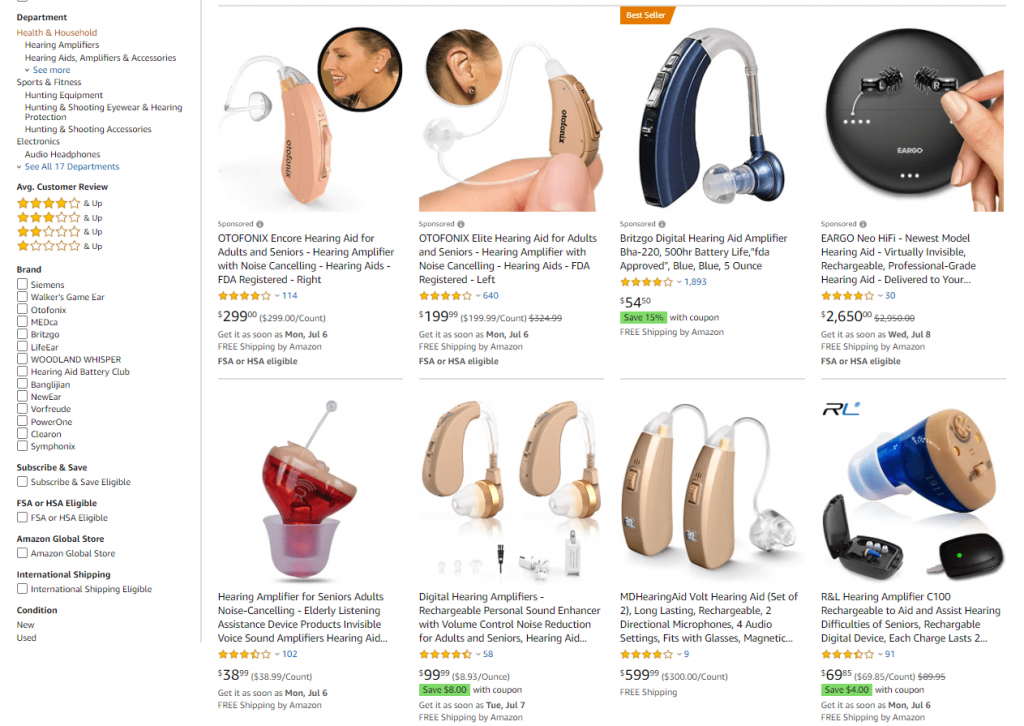
Leading supermarkets such as Walmart also offer hearing amplifiers online.
If you decide to purchase hearing aids or personal amplifiers online, you could compare sites from sites.
Compare Different Purchase Channels
If you are buying from local stores, you may have fewer options than what you could get from online stores. Some clinics could only work with limited manufacturers and they might not have the hearing aids you want. But, you will get better services such as fitting and after-sales services from audiologist.
On the other hand, buying online brings you cheaper products and shopping convenience. Most online vendors also offer 60-90 days money-back guarantee. If the product does not meet your expectations, you could return products and get your refunds.
Generally speaking, because of the transparent price of online purchases, the overall cost will be relatively low. Hearing aids from traditional audiologists may cost you more, but the services provided are indeed better and more professional.
You can decide where to buy hearing aids based on your budget and your preferences.
CHAPTER 8
How to Choose the Hearing Aid
Choosing a hearing aid is not as easy as you might think.
There are many things need to be considered to ensure that you get the right hearing aid for your hearing loss.
We hope to make it easy for you through our detailed guide in this chapter.
So, let’s get started.

How Severe is Your Hearing Loss
One thing you should definitely consider when buying a hearing aid is your hearing loss level. It can range from mild to severe.
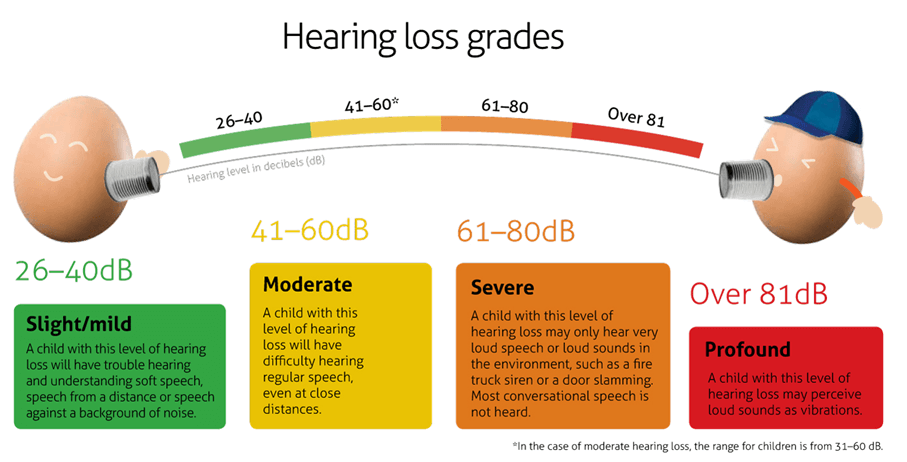
Normally, open-fit/in-ear aids are ideal for mild to moderate hearing loss. Also, keep in mind that in-ear models don’t go well with severe hearing loss.
Another point is that for the same model, hearing aid suppliers may have different settings (gain, output) to meet the hearing loss of different people. For more specific setting, you could consult with your hearing aid provider.
What Features Do You Really Need
You might remember we talk about all hearing aid features. Butm you don’t have to pursue all features in one device. Some features are more important for you and some maybe not.
If you are active and you like sports, waterproof hearing aids could help against sweat and extend the device’s life.
If you are a music fan and would love to stream audio from smart devices, products with good Bluetooth connection and longer working time will be a great option.
Many elders have finger dexterity problem and changing batteries could be time-consuming for them, then rechargeable hearing aids could relieve the problem. Most manufacturers launched rechargeable hearing aids since a few years ago, it won’t be hard for us to find one.
Don’t be overwhelmed by all fancy features, check out with your provider and focus more on needed features.
What’s Your Preference On Design/ Outlook
Hearing aids come in various styles and shapes. Different consumers have different needs, don’t panic, just choose the one that suits you best.
You could combine the opinions of audiologists and your preferences and then choose the design/outlook.
For experienced hearing aid users, you can even customize your device in terms of colors, features, and more.
What’s Your Budget
You can get hearing aids costing a few dollars to thousands of dollars.
If you’re on a tight budget, you can talk to your audiologist about the best device for you. Buying online is another way to cut costs.
What’s the Best Hearing Aid Brand
You may be wondering: what’s the best hearing aid brand?
Well, the answer is different for different users. It depends on several factors including your hearing severity, what situations do you use hearing aids, how big is your ear canal, do you need an ear mold, is durability important, etc and other different factors.
Regardless of your choice of manufacturer or brand, your hearing aid should be able to fulfill your hearing needs. And if you are asking audiologist’s help, make sure your hearing aids are well fitted and programmed.
CHAPTER 9
Tips Before Purchasing Your Hearing Aid
First, congratulations on coming this far.
Now you have nearly everything you need to know about hearing aids.
On last chapter, we covered some points you should consider when you are choosing hearing aid, now we would like to remind a few tips when you are just about to buying hearing aids.
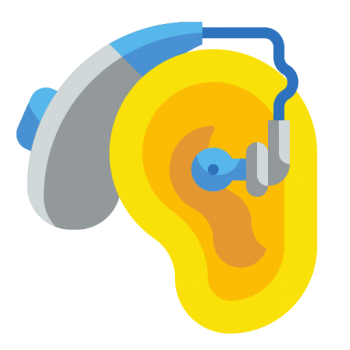
Get a Checkup
Before anything else, you need to visit your audiologist for a hearing test. This will help you know your degree of hearing loss and which device is best for you.
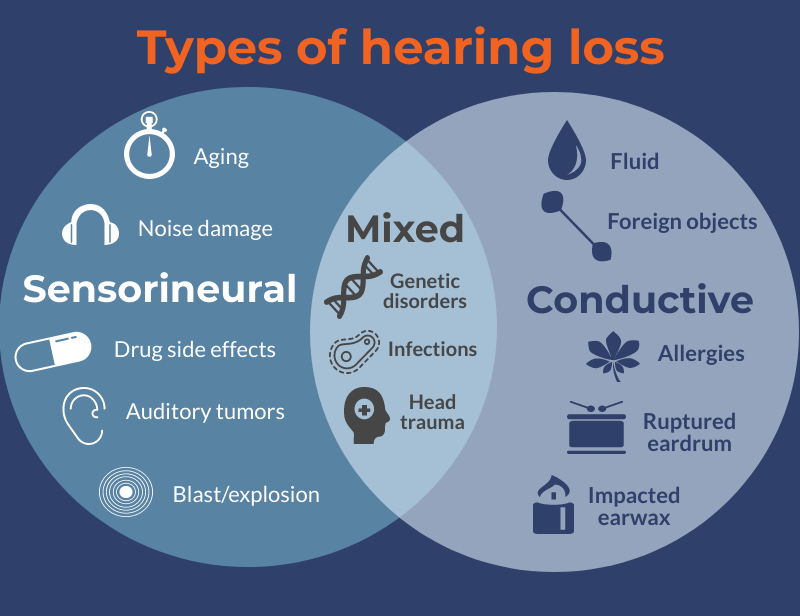
The checkup involves a physical examination of your ears and different hearing tests on you hear sounds in various volumes. These results tell if you have a mild or severe hearing loss. And they are helpful for programing your hearing aid and improving your hearing experience.
Check Your Insurance Coverage
Do you know that nowadays some insurance plans such as Medicare and employer-sponsored cover part or all of the cost of hearing aids?
Yes, you should find out your insurance coverage. This will reduce the costs you incur, making the treatment more affordable.
Ask About a Trial Period
If you are using hearing aids for the first time, you might feel it’s uncomfortable and the sound is strange to you. Well, that’s probably because your mind is not used to your hearing aids yet. It can take up to 4 months for you to get accustomed to your hearing device.
Because of the brain fitting issue, most hearing aid provides offer a trial period, which could last 1 month or even longer time. That’s why you should thoroughly check how long the trial period is.
Also, ask if the policy is attached to any fees and if you’re given a chance to try a different hearing aid if one doesn’t suit you.
Watch Out the After-sales Term
After-sale services are crucial. Your provider should give you a copy of what to expect once you purchase their hearing device.
You should also find out details about the warranty and if they provide loss/damage insurance or an extended warranty once the warranty expires.
Real Ear Measurement for Hearing Loss Fitting
When you are meeting with your audiologist, the provider should ensure that the aid fits you comfortably. Your provider may give you a real-ear test or ear measurement during fitting. It entails measuring how well your hearing aid response to your hearing loss in noisy and quiet environments.
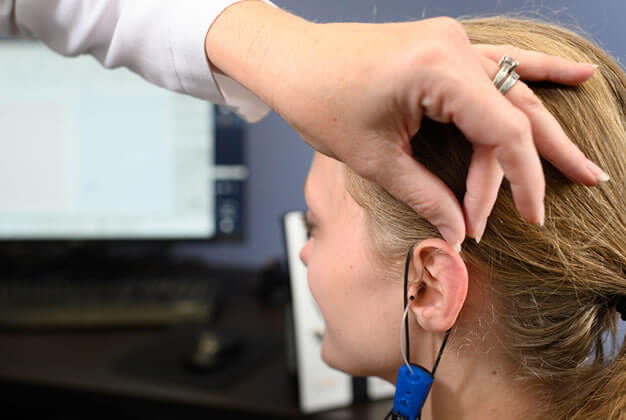
Before you leave their premises, you are free to ask the provider to make any adjustments you might need.
Now:
Above we just list a few tips for your hearing aid purchase. Don’t worry, you have walked this far and know hearing aid pretty much well. You could make smart decisions.
Now It’s Your Turn
That’s all for our guide to hearing aid..
Now, we’d love to hear from you:
What challenges have you faced getting a hearing aid before?
What stops you from choosing your ideal hearing aids?
Is this article helpful and informative?
Either way, let us know by leaving a comment.
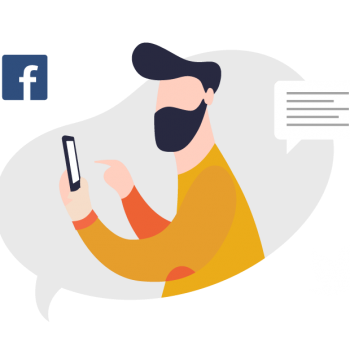
Source
Image 1: https://listeninglab.sg/blogs/hearing-aids/how-hearing-aids-work
Image 2: https://www.truhearing.com/getstarted/change-hearing-aid-volume-programs/
Image 3: https://www.silentium.com/technology/
Image 4: http://www.goodwill19.com/the-5-little-known-things-that-audiologist-also-do/
Image 5: https://www.truhearing.com/more-resources/are-hearing-aids-with-more-channels-better/
Image 6: https://www.agingkingcounty.org/2019/02/06/increase-access-and-independence-for-people-with-hearing-loss/
Image 8: https://www.audiologyonline.com/articles/datalogging-hearing-aid-behavior-in-20258
Image 9: https://www.hearinghealthassoc.com/hearing-health-associates-va-blog/2017/4/26/rechargeable-hearing-aids-how-zpower-is-changing-the-landscape
Image 10: https://www.starkey.com/support/hearing-aid-warranty-and-returns
Image 11: https://www.costco.com/hearing-aid-center.html
IMage 12: https://www.who.int/pbd/deafness/hearing_impairment_grades/en/
Image 13: https://www.healthyhearing.com/help/hearing-loss/types
Image 14: https://flexaud.com/what-is-real-ear-measurement/

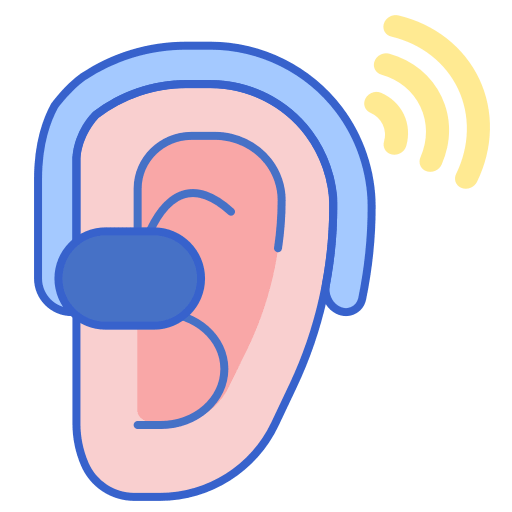
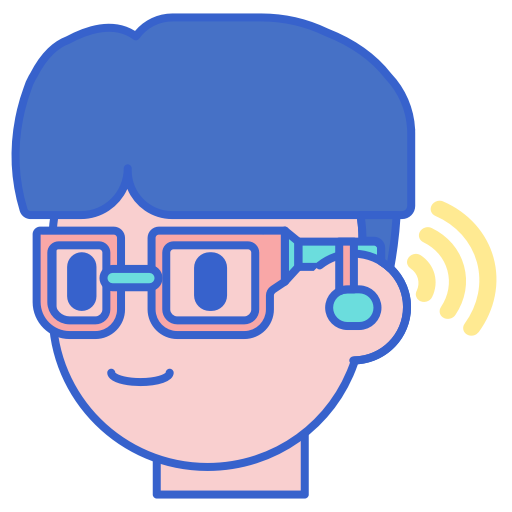
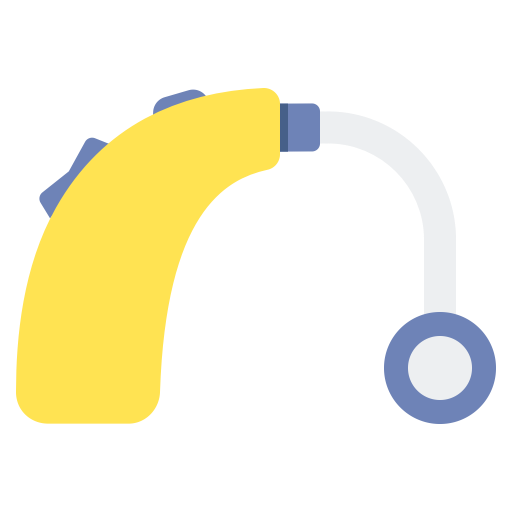

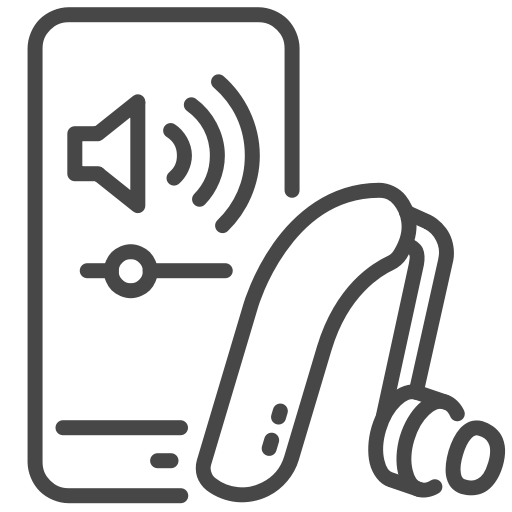



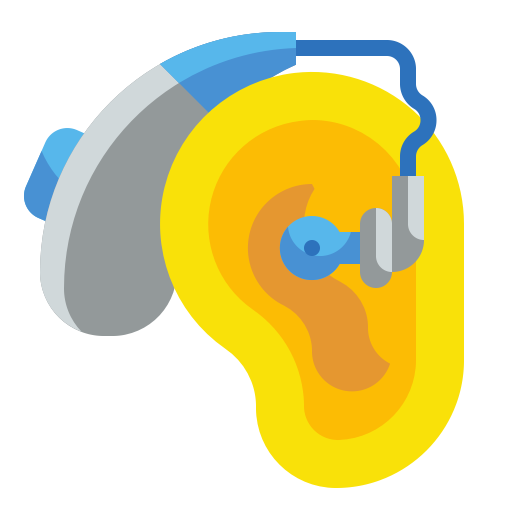
4 thoughts on “Hearing Aids: The Definitive Guide”
“People who already use a hearing aid know that selecting the right one is not a simple process,” says Eric Mann, M.D., Ph.D., deputy director of FDA’s Division of Ophthalmic, Neurological, and Ear, Nose, and Throat Devices. “There are many issues to consider. Also, current users of hearing aids want to know about the latest types and technology, and how to properly maintain the ones they already have.”
Hi, thanks for leaving your thought. Can’t agree with you more.
I need some info on how to clean the wax from my TruHearing aids.
Hello you could find some Youtube video or talk to sales from TruHearing.